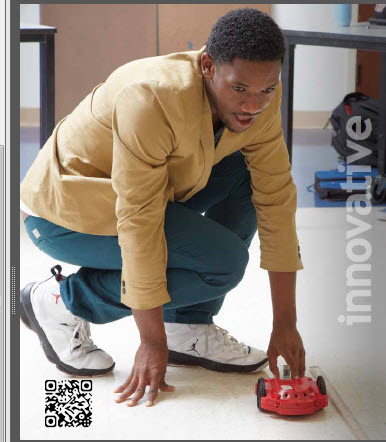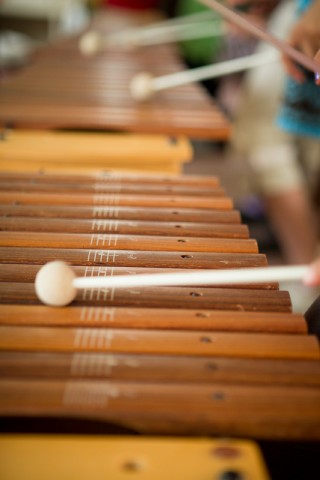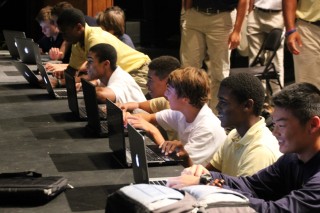Upper School physics instructor Dr. Matt Greenwolfe saw a problem last year in his mechanics course. He knew his students were learning what they needed through their worksheet problems, but they weren’t having that knowledge reinforced by seeing it in action.
Like the good scientist he is, Greenwolfe approached the problem, studied it and then came to the conclusion that he needed to implement a new lab experiment into the course. A lab experiment with robots.
Using a school grant, Greenwolfe researched educational robots. “I wanted something mathematically precise so students can check and confirm results. From what I found, nobody had ever tried to have an educational robot perform to mathematical precision.”
Taking matters literally into his own hands, Greenwolfe attempted to build a robot for his methods. “I taught myself what was necessary, but then I found there was an educational robot out there that did meet my needs, the Scribbler II from Parallax Inc. out of California.”
Using the grant money, Greenwolfe purchased 10 Scribbler IIs. But the robot wasn’t perfect for Greenwolfe’s purposes. He learned two new computer languages and rewrote the motor drivers for the robots to fit his methods.
With the Scribbler II, Greenwolfe now has an apparatus that is self-checking. “This completes the learning cycle,” he said. “Students make a graph on their laptop, they send the graph to the robot, they study the robot’s motion, and then change the graph as needed. The students are now in control of the cycle. They can create the experiment, measure it and get confirmation.”
Greenwolfe’s robots are used to teach kinematics, which is the branch of mechanics that describes motion, but he has plans to use robots in all aspects of his class. (Instructor Jennifer Rotolo has used Greenwolfe’s robots in her Honors Physics and Advanced Mechanics classes.) “There are lots of places still to go with robots in my class,” Greenwolfe said.




If you find this idea interesting, please check out my blog at http://aphysicsmicrocosm.wordpress.com/ . I describe lessons and activities using the robots, and there is information about how to purchase my software, which includes the motor driver mentioned above as well as the graphical user interfaces students use to draw position vs. time, velocity vs. time and acceleration vs. time graphs on their computers and send them to the robots.